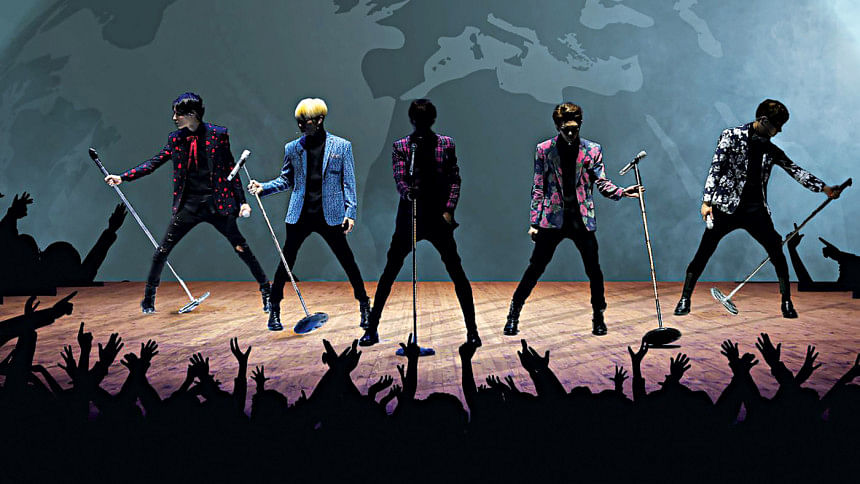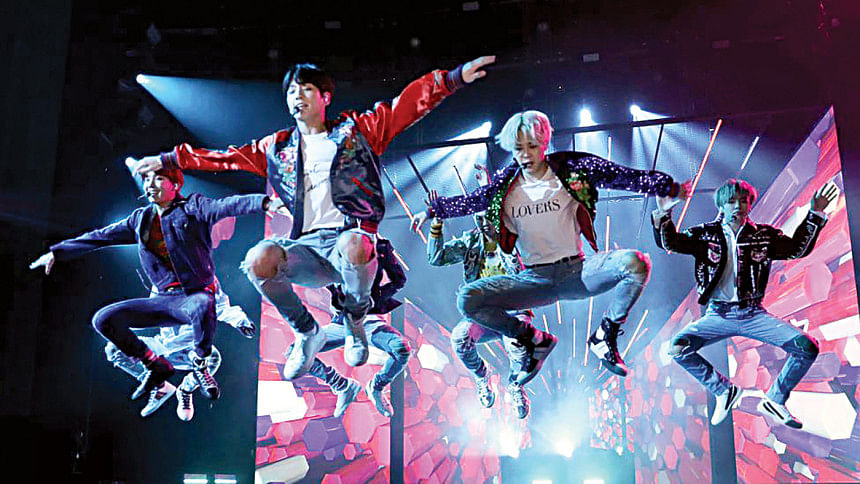What makes K-pop and K-drama worldwide sensations?

In 2012, Psy's global hit "Gangnam Style" went viral because of its catchy tune, vibrant aesthetics and uniqueness. It was the first time a South Korean artist had broken into the international music scene. More recently, K-pop (Korean pop) boy band BTS's "Boy With Luv" featuring American singer Halsey is a popular tune while their track "Dynamite" broke records for the most views on YouTube in 24 hours. South Korean dramas, or K-dramas, have also started breaking into international platforms. Although some might consider the genre's popularity to be a fad and purely for its aesthetic appeal, there is more cultural and emotional resonance than meets the eye. With captivating visual effects, appealing aesthetics and mesmerising storylines, Korean pop culture has influenced music and fashion trends, vocabulary, etc. globally.
So, what is it about k-pop and k-drama that transcends cultural barriers?
The Korean Wave (the increasing worldwide popularity of South Korean culture since the 1990s) has been recognised in many parts of the world for the past two decades, and K-drama and K-pop is now reaching non-Korean media consumers and enthusiasts.

In the K-pop industry, fans smile and cry with their artists. Starting from the rigorous training that artists, or more commonly known as idols, endure from a young age perfecting their singing, dancing, and acting, to their hardships after debut, their stories have a universal appeal because of their sacrifice, perseverance and determination. However, this is often overshadowed by commercialisation. Consequently, those who are not avid fans of k-pop and unaware of what goes into moulding these artists are quick to judge. Despite such judgments, the catchy music, visual aesthetic and the musical diversity presented in this genre along with the unique choreography, is what makes K-pop so popular.
During the second generation of K-pop in 2007, Korea's economic crisis resulted in higher commercialisation of idols and increased profits in the industry. Unlike their predecessors, second generation groups (TVXQ, BIGBANG, Super Junior, Girls' Generation, SHINee, 2PM, INFINITE, f(x), 2NE1, Miss A, SISTAR and Wonder Girls) abandoned the 'secret untouchable superstar' image and favoured the 'friendly neighbourhood star' concept. This made fans feel like their idols were their friends. Idols also began landing roles in K-dramas. Artists like IU, one of South Korea's most beloved soloists, moonlights as an actor, having acted in some of the highest-rated TV shows in Korean cable history, such as Hotel Del Luna and Dream High. Other idols have created waves with their acting talents throughout the years, including BTS' V, EXO's D.O and Suho, Got7's Jinyoung and JB, Red Velvet's Joy, and many more.

K-dramas in particular present a vision of a society that upholds traditional values while progressing toward economic development. For international audiences, these dramas act as a cultural portal. In comparison to Western TV shows and drama, K-dramas have a defined beginning and end — one plot arc usually covering 16 to 20 one-hour-long episodes. As the show is only on for a limited time, viewers do not get bored with the characters, and do not have to watch a once-popular series go off the rails by overstaying its welcome. Many K-dramas like What's Wrong With Secretary Kim? and My Love From Another Star, offer chaste storytelling and escape that feels like a throwback to simpler times. K-dramas also depict Korean norms and etiquettes, rarely use vulgar vocabulary, violence, and rarely show any awkward love scenes, making it more wholesome and endearing.

It is undeniable that the genre's aesthetic is captivating but the genre is dynamic. With individuals training away their childhood and prioritising their fan base, and heartfelt stories evoking both sadness and joy, it speaks to people universally and creates an attachment with the genre filled with hope and comfort.

Photo: Collected

 For all latest news, follow The Daily Star's Google News channel.
For all latest news, follow The Daily Star's Google News channel. 



Comments